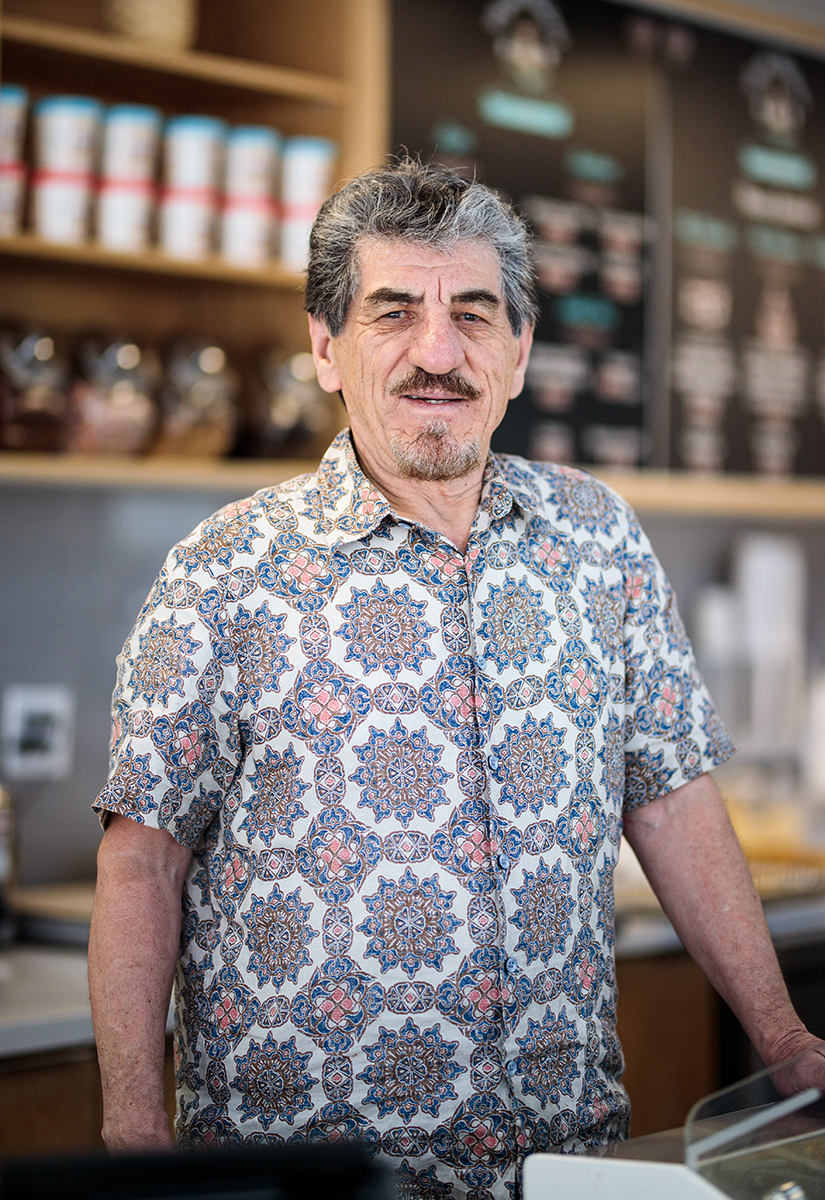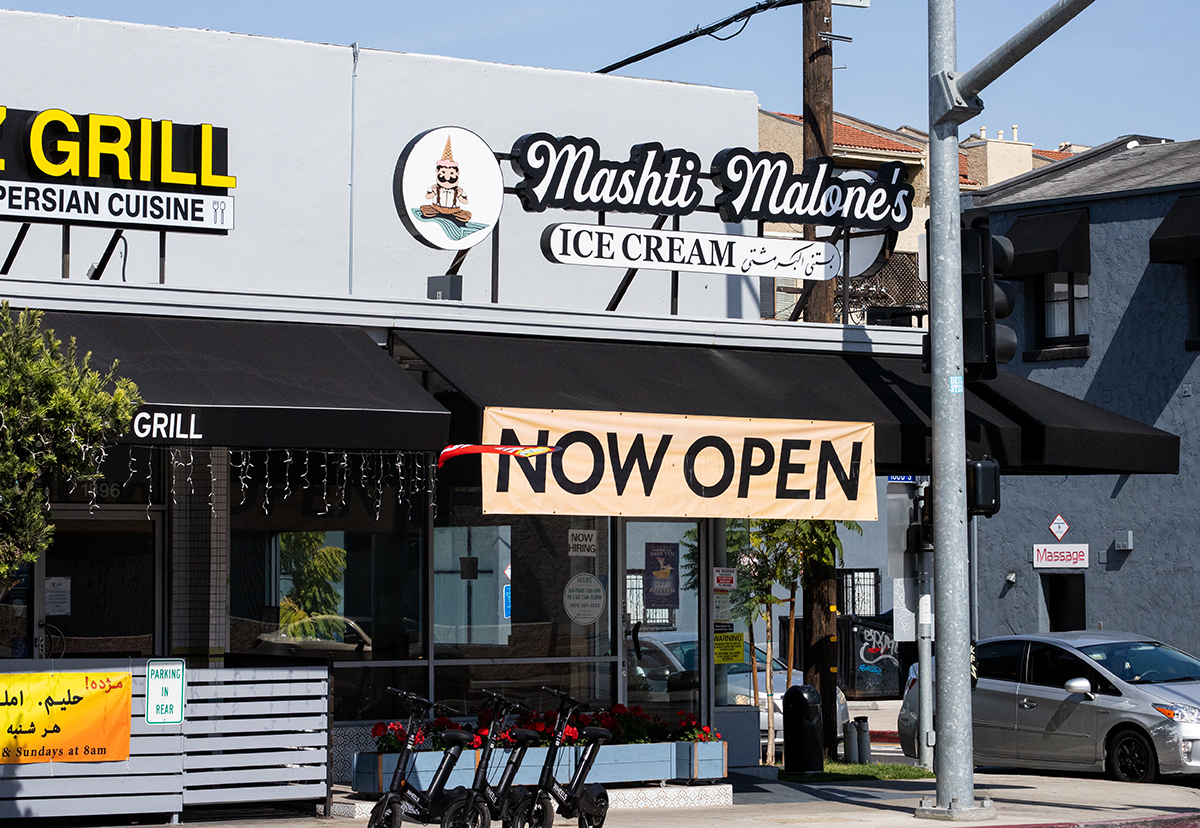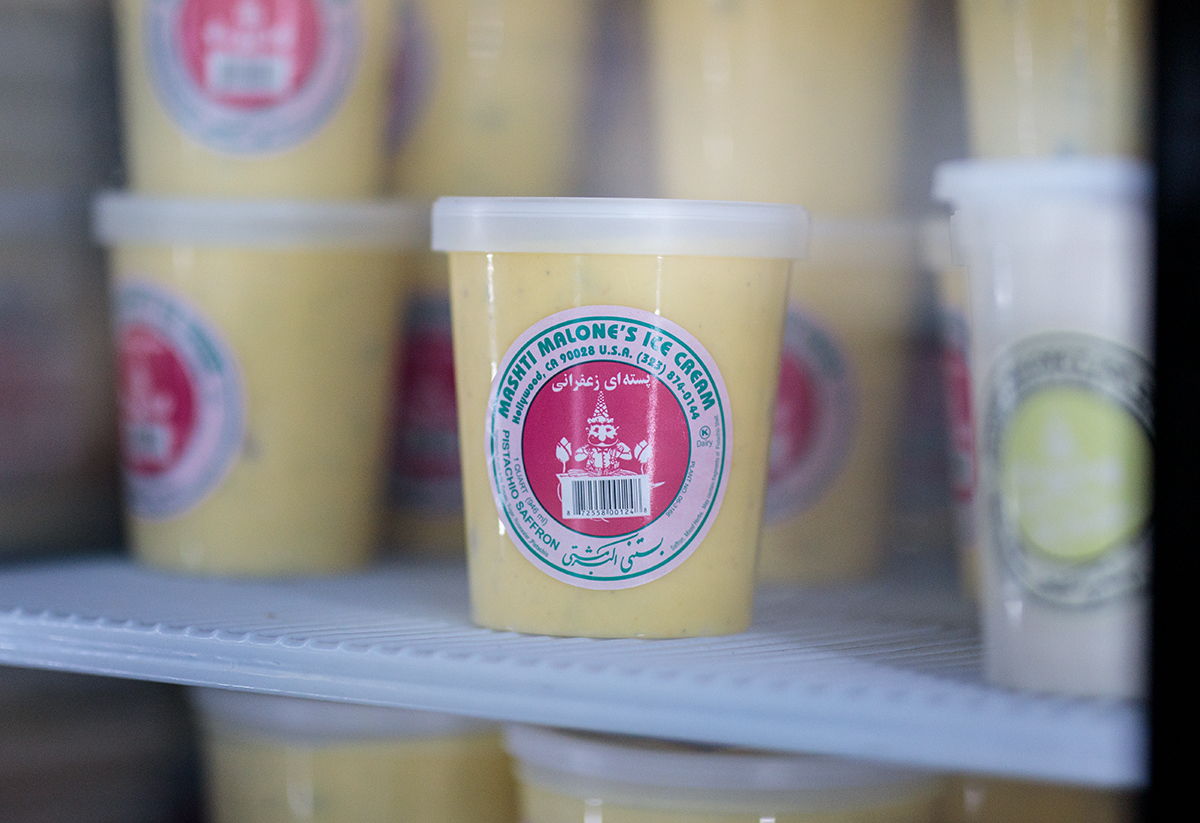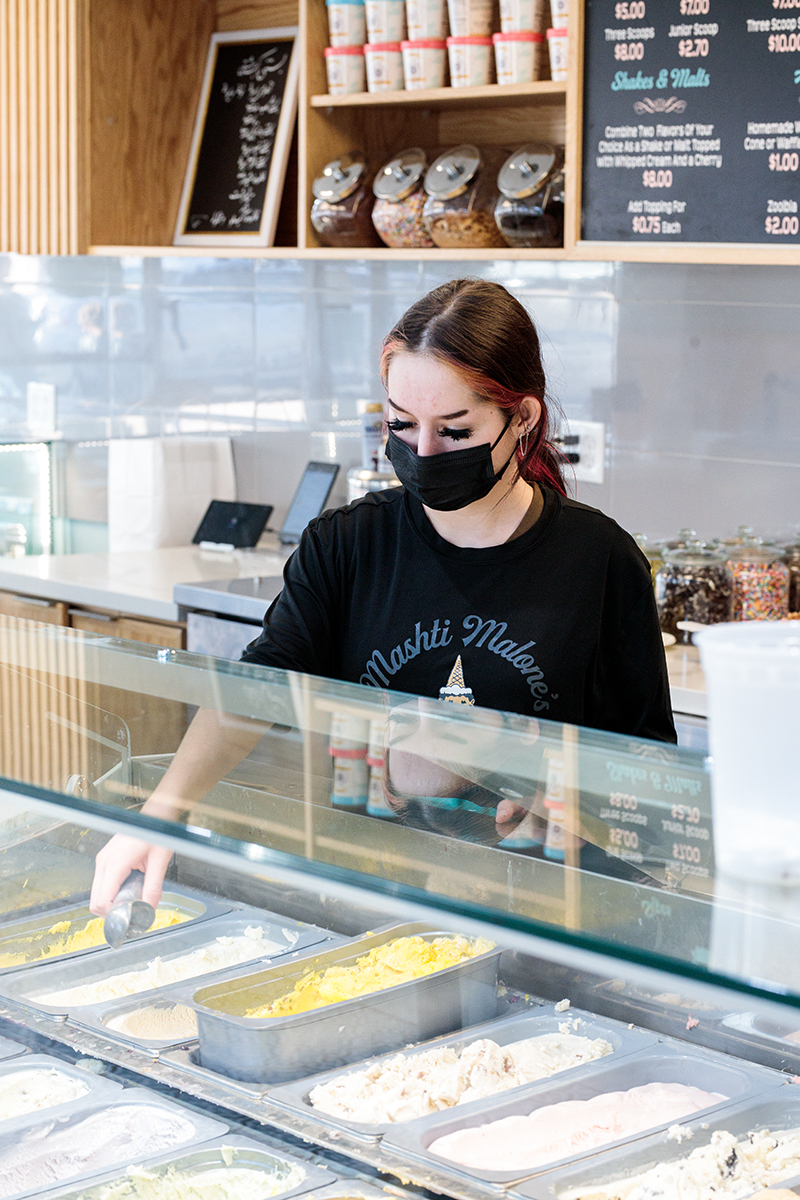PRIME: More than ice cream

(Ethan Manafi/Daily Bruin staff)
By Natalie Tabibian
Sept. 17, 2022 10:50 p.m.
Just a half an hour drive from UCLA’s campus lies the Hollywood Walk of Fame and its more than 2,500 stars. From TV personalities such as Food Network’s Guy Fieri to legends of the silver screen such as Marilyn Monroe, many of the most talked-about names from a variety of industries find themselves engraved on Hollywood Blvd. While Mashti Shirvani may not have a star of his own, he is still a bit of a celebrity.
Shirvani, who immigrated to Los Angeles from Iran in 1977, founded Mashti Malone’s, a Persian ice cream store with two locations in the area. The first location made its Hollywood debut in 1980, only a few streets away from the Walk of Fame. Popular demand led to the opening of the second location in a part of Westwood known as Persian Square just last year.
As Shirvani’s business and customer base has flourished, he has grown in popularity himself. On the anniversary of the business, employee Rachel Zamfir saw a couple approach Shirvani as if he were a celebrity.
“This couple, in particular, were fangirling over him,” said Zamfir, a fourth-year psychology student. “They even went as far as to take a photo with him in front of our big wall with our ice cream.”
Shirvani truly serves as the mascot for his own business, with a caricature resembling his face as well as his name on pints of ice cream in homes around LA. But unknown to most, each container carries with it a decades long history – and the support of LA’s vibrant Persian community.

Shirvani has always had a passion for food and flavors. As a child in northeast Iran, he grew up working alongside his father in the family’s restaurant while learning how to craft classic Persian ice cream from his uncle.
Shortly before the Iranian Revolution, Shirvani immigrated to LA. He maintained his ties to home by working in a Persian restaurant and whipping up bastani – traditional Persian ice cream – for customers. With flavors such as saffron, rosewater and pistachio, many other Iranians found his bastani reminded them of childhood delights. As demand for his creations grew, Shirvani began producing and selling his ice cream wholesale.
Shirvani eventually seized the opportunity to open a brick-and-mortar store after finding that the space previously occupied by another ice cream shop – Mugsy Malone’s – was available. Working with limited funds, Shirvani replaced the word “Mugsy” with “Mashti” on the building’s sign and had the name of his new business ready to go.
From the beginning, there has always been a familial and community element to Mashti Malone’s. Shirvani’s brother, Mehdi Shirvani, joined him in his business in 1988 when he moved to LA.
Community also extended its hand during Mashti Malone’s first year of operation. Even though the lack of sidewalk traffic at the location proved fatal to Mugsy Malone’s, Mashti Malone’s found success. Customers from Mashti Shirvani’s previous jobs flocked to purchase the ice cream he made, making Mashti Malone’s a taste of home to the 87,000 residents who now make up the area’s Persian community. And even those outside of LA enjoy partaking in the business.
“Absolutely amazing!” one Yelp reviewer from Ohio said. “Felt like I was back home in Iran!”

Mashti Malone’s location – in the heart of LA – has been crucial to establishing the community that rallies behind the business. The Shirvani brothers sell their ice cream to Persian and Armenian grocery stores across California, cementing their ties to Westwood’s Persian Square. Families from the area also frequent Mashti Malone’s, Zamfir said.
“It’s just nice, seeing the sense of community, having all these big families come in and enjoy their ice cream,” Zamfir said.
Over the years, LA has become a sort of ethnic enclave for the Iranian diaspora. It has even earned itself the nickname “Tehrangeles”, in reference to Tehran, the bustling capital city of Iran.
Mehdi Shirvani, who has lived in LA for 34 years, believes that Persians have good taste in choosing their homes. He sees Southern California as a paradise, attracting Persians with its perpetually sunny climate and close proximity to family and friends. He added that Westwood also gained popularity in the Persian community because of its position near UCLA, a dream school for many students from Persian families.
“I cannot live in any other place other than LA,” Mehdi Shirvani said. “We’re spoiled.”
Latifeh Hagigi, a lecturer who teaches Persian at UCLA, said LA has always attracted Persians with its diverse population and big-city opportunities. Once the initial wave of immigrants relocated to the area after the 1979 Iranian Revolution, others followed suit to be close to their friends and families.
“Iranians, they attract each other, so gradually, they started to see that it was a nice area in West LA … and so it became like a big community,” Hagigi said.
After moving from Iran to the United States in the 1970s, Hagigi pursued her masters in Iranian studies, partially fueled by her desire to remain connected to her culture. When she relocated to Utah, she integrated herself into Salt Lake City’s Persian community. But after following multiple family members who moved to LA, she found herself among a much larger Persian community with many more cultural events to partake in.
Even compared to other parts of California, LA offers a more engaged Persian community. Growing up in Sacramento, alumnus Sherin Khoygani found that her peers often lacked insight into and respect for her culture. In LA, however, Khoygani said she has observed that more people have Persian friends and colleagues, allowing them to gain more cultural awareness.
“That was really cool to see so many people of a similar background or shared culture partaking in a cultural activity or holiday that I have always grown up doing but just with my immediate family,” said Khoygani, the former president of the Iranian Student Group.
David Yamin, a third-year world arts and cultures student, said the university’s large Persian population offered him a sense of belonging. Currently the co-president of the Persian Community of Hillel, Yamin grew up in Westwood, surrounded by the bustling stores and restaurants of Persian Square. But he gained a greater appreciation for his culture at UCLA, as he was able to share it with others who may have been less familiar with it, he said.
“UCLA is really diverse,” Yamin said, “I really love talking to different kinds of people and showing them my culture and learning about their culture.”
Mehdi Shirvani has noticed this blending of cultures within his family. While his teenage daughters have close ties to American culture, they also take pride in their Persian identity and heritage, he said.
“I see how they (his daughters) really enjoy going back to their roots,” Mehdi Shirvani said. “They share Persian foods with their friends, and it wasn’t like that three decades ago.”
The reason for this sharing likely comes from the assimilation of the younger generation, Hagigi explained. Because of their upbringing in America and their Iranian origins, Hagigi said the children of immigrants have easily incorporated themselves into both Iranian and American culture.
“They are not totally American or totally Iranian,” Hagigi said. “This new generation, of course, they speak English, they know the culture. So they can easily be mixed with the rest of Los Angeles.”
Over the past few decades, Mashti and Medhi Shirvani have also learned to blend Persian and American tastes. Despite customers’ initial hesitation, the brothers have made it their mission to introduce their non-Persian clientele to traditional Persian flavors, including rosewater and saffron. Eventually, appreciation for the craft of bastani followed.
At the same time, Mashti Shirvani has also learned to craft classic American flavors, such as cookies and cream and butter pecan. His latest project includes using nondairy ingredients to create old-fashioned ice cream, catering to a variety of dietary needs.

His wide variety of offerings has brought flocks of students to the Westwood location, allowing it to serve as a welcoming introduction to Persian Square and Persian cuisine. For Zamfir, her job at Mashti Malone’s has given her just that.
“I actually did not know that the Persian Square existed,” Zamfir said. “A lot of our customers are Persian, so being able to interact with different ethnic groups and cultures is something that I hold very dearly to me being able to work at this job.”
As Mashti Shirvani nears retirement, he hopes his business will continue to spread the joy of Persian ice cream across state lines. But regardless of what the future holds, he will never forget the loyal customers and Persian Square community that catapulted him to success.
“They (businesses in Persian Square) are united. It’s like back home,” Mashti Shirvani said. “They got very happy when we went there (Westwood). They came. They welcomed us.”
Contributing reports from Alyssa Bardugon and Rachel Rothschild, PRIME contributors.

